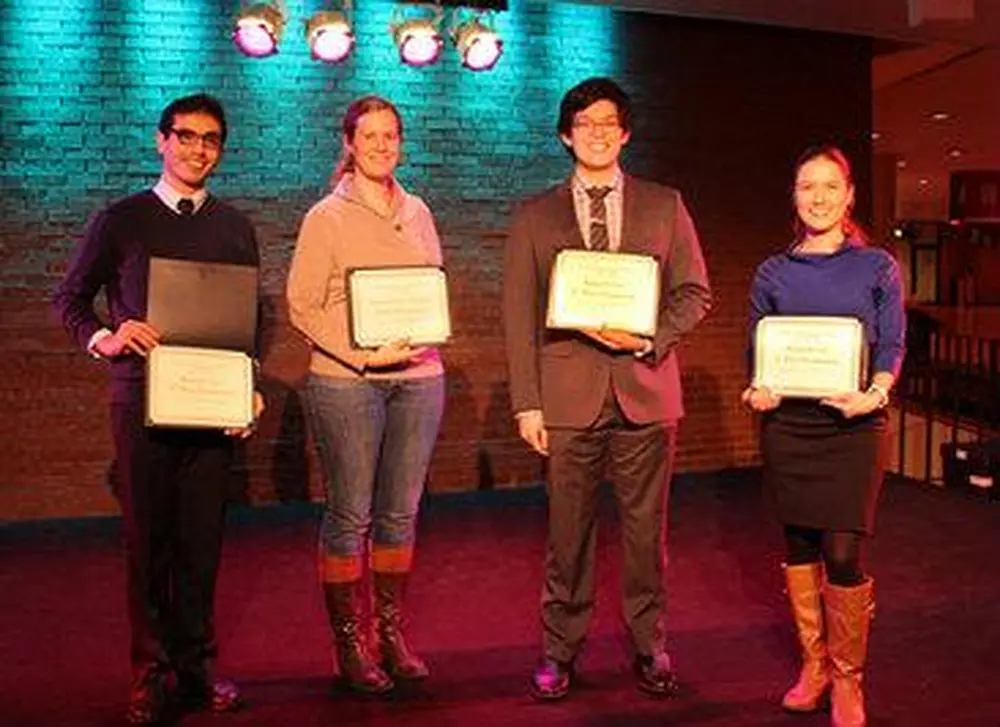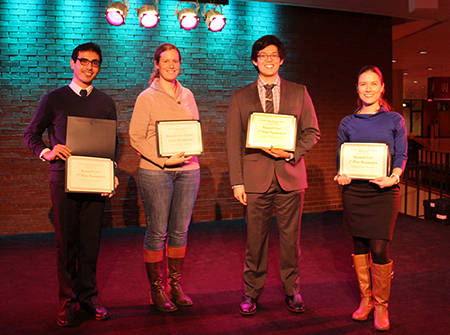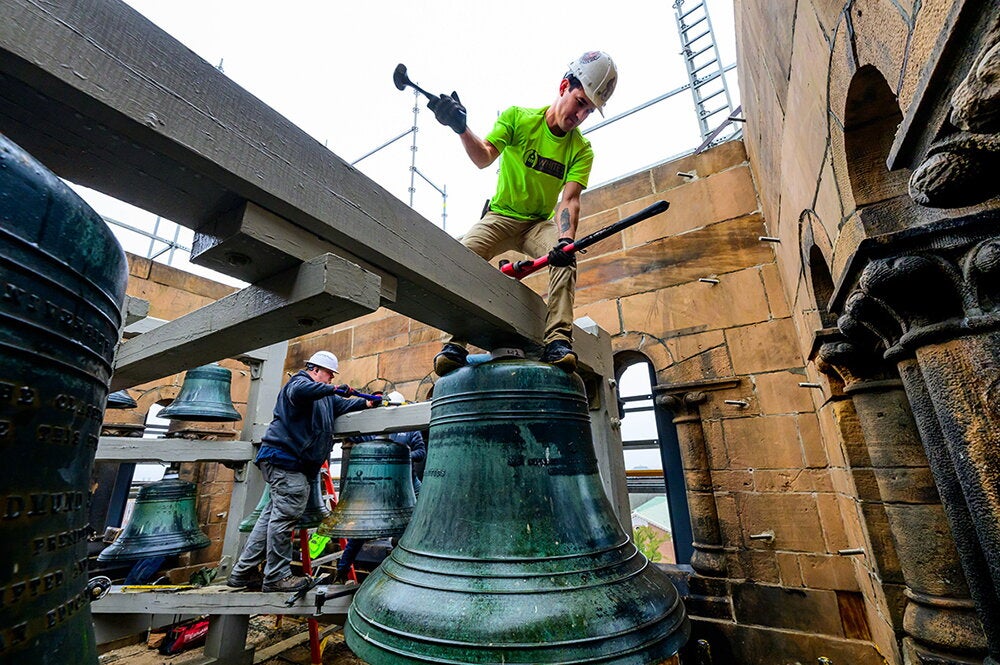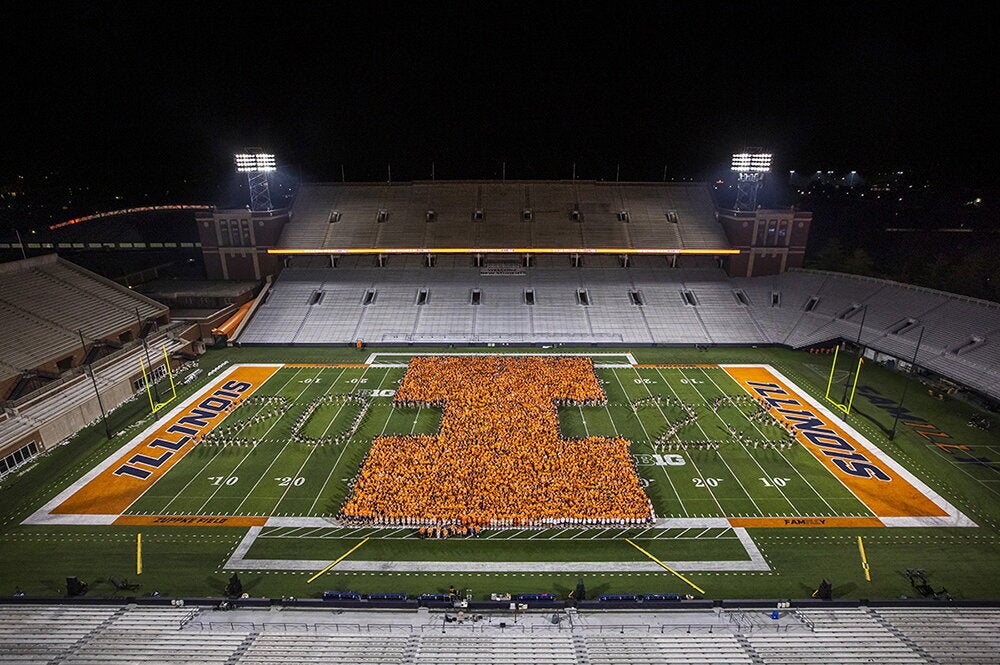

Four graduate students affiliated with the College of LAS were winners during the first ever Research Live! campus competition that focused on participants’ abilities to present their findings clearly and succinctly in less than three minutes.
Ipek Tasan, Marc Ryan Gancayo, Vahid Mirshafiee and Robin Holland received top honors among 65 graduate students who entered the competition, which was hosted by the Graduate College last November. Participants were scored on delivery, clarity, effectiveness of visual material, and accessibility of language during presentations with limited time and supporting materials (they were allowed only two presentation slides.)
Organizers designed the Research Live! to encourage graduate students to take a different approach to their research, and to consider how to explain their work in simple terms, especially to people outside of the science community. Alexis Thompson, assistant dean for graduate student development and postdoctoral affairs, said it was also a “wonderful way” for people to see the great work of graduate students at Illinois.
After a preliminary round, 12 finalists were chosen to present their findings to the public at the Krannert Center for the Performing Arts. Winners were chosen after the public round.
Tasan, a graduate student in biochemistry, took home first place honors for her presentation, “Finding Partners in Crime Causing Colon Cancer.” Tasan’s demonstration detailed her work in the Zhao Lab researching genetic changes that cause cancer. With her research, Tasan hopes to identify novel cancer causative gene pairs by determining which two genes’ absence reverses cancer. With such a discovery, more targeted, individualized therapies for cancer can be developed.
“Explaining my research in only three minutes was such a challenging and exciting experience,” Tasan said. “I am very honored to be the winner of the first Research Live! competition at Illinois.”
Marc Ryan Gancayo, a graduate student in chemistry, and Vahid Mirshafiee, a graduate student in chemical and biomolecular engineering, shared second place honors. Gancayo’s presentation, “Sublancin: An Antibiotic with a Sweet Side,” explained how his lab discovered that a single glucose molecule is tethered to the sublancin 168 compound, which may be the key to figuring out how the antimicrobial compound is able to kill bacteria. In his first year of grad school, Gancayo said science communication is one of his passions.
“The talks were fantastic,” Gancayo said. “It was great seeing groups from very different disciplines. Working in chemistry, I don’t often get to see talks by graduate students outside of science. To prepare for my talk I practiced on my wife who has little background in science—she is very hard to impress.”
Mirshafiee presented “Targeted Delivery of Anticancer Drugs to Tumors,” which outlined his research on transporting anticancer drugs directly to tumors and cancer cells using nanoparticles. Mirshafiee has been a grad student at Illinois since coming from Iran in 2010 and was happy to have a platform to explain his work.
“What I really liked was that I could explain my research in a way that was attractive to people and they could understand it,” Mirshafiee said. “Apart from being interested in your own research, it’s really important that you feel good about explaining your work to others in way they can understand.”
Finally, Robin Holland, a graduate student in pathobiology who did her research in a laboratory in the Department of Microbiology, was the People’s Choice selection for her “Taking Down the Powerhouse” presentation. Holland explained her research in pathogenic microorganisms and how pathogens cause disease by sending “bombs” to the body’s powerhouse, the mitochondria.
“I decided that if I am ever going to improve my speaking skills, I need to do things that I am uncomfortable with, and even if I fail, at least I know I tried and can learn from those experiences and move forward next time,” said Holland.


